While we’d usually venture to these areas for its hipster, modern cafes and vintage murals, the Kampong Gelam precinct actually boasts a whole host of traditional businesses residing within an area steeped in culture and history. It’s a magnificent example of how Singapore has retained its tradition in an area that has simultaneously progressed in its modernity.
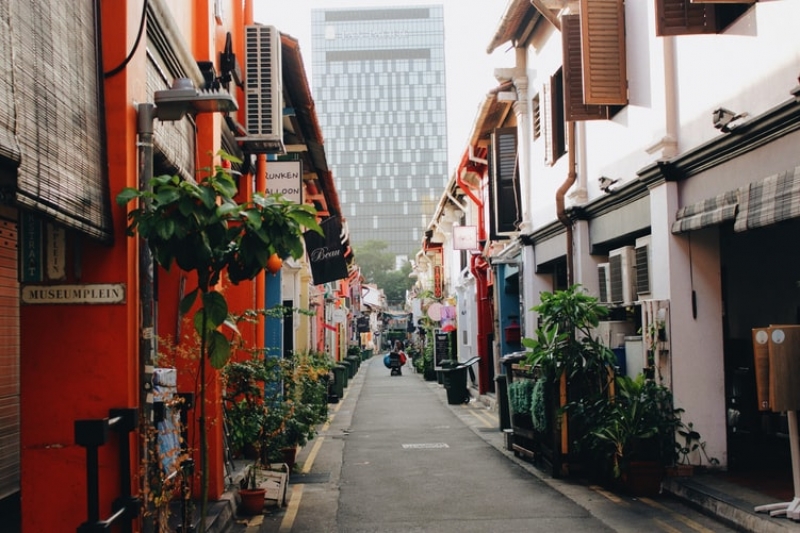
Image credit: Rifki Fajar Hadiawan
While we’d associate the modernity and hipster qualities of this area with Haji Lane and Arab Street, less than a five-minute walk away brings you to Bussorah Street, Jalan Sultan, and North Bridge Road. These areas are steeped in traditional architecture and are home to family businesses, with some lasting for more than eight decades.
Also read: 38 Places To Eat in Bugis And Kampong Glam
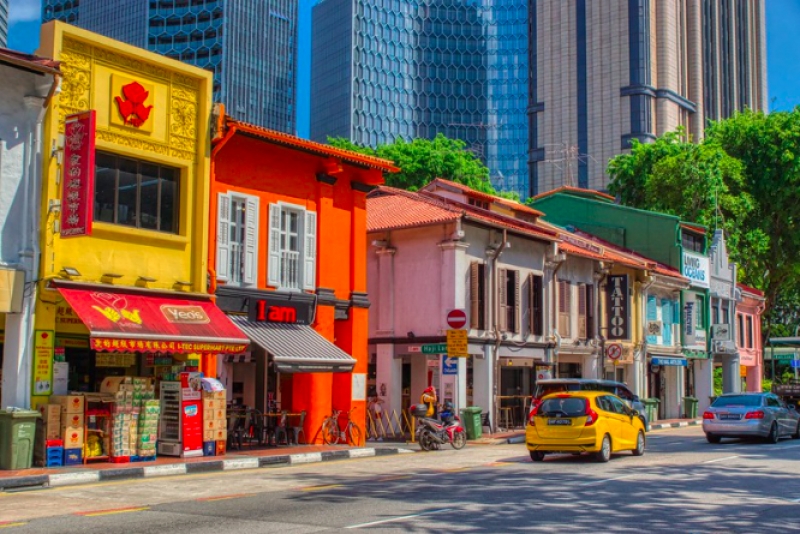
Image credit: Uwe Schwarzbach
Fully funded by the National Heritage Board (NHB), they’ve partnered up with seven of these traditional businesses in Kampong Gelam to co-curate “mini-museums” in the Street Corner Heritage Galleries initiative. These displays of artefacts offer a behind-the-scenes look into the businesses’ most prized possessions that have led to its success and popularity. After all, its long-standing history is something to be marvelled at.
Fun fact: These mini-museums are completely free-of-charge for public viewing, and even have QR codes available within its display so that visitors can view them in our Mother Tongue languages (Mandarin, Malay, and Tamil).
For a full map of the seven locations, click here.
Seven of the Oldest Businesses in Kampong Gelam
Haberdashery
1. Sin Hin Chuan Kee
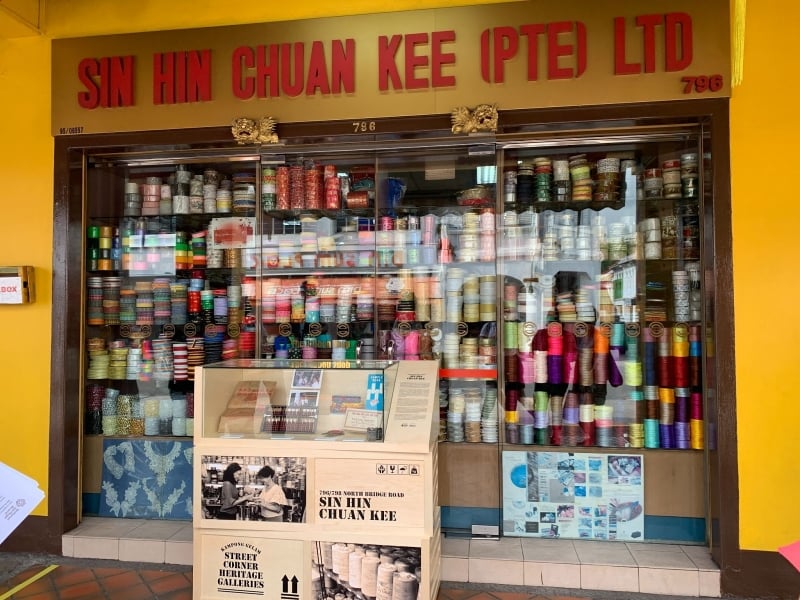
Image credit: Cassandra Nerva
Unknowingly, we’ve all definitely worn clothes with materials supplied by this company before: Sin Hin Chuan Kee is the #1 distributor of thread and assorted accessories in Singapore, and guess what – they distribute to local school uniform manufacturers. Even if we’ve never stepped into its doors before, one would’ve at least noticed the shop, as its bright yellow exterior is certainly hard to miss.
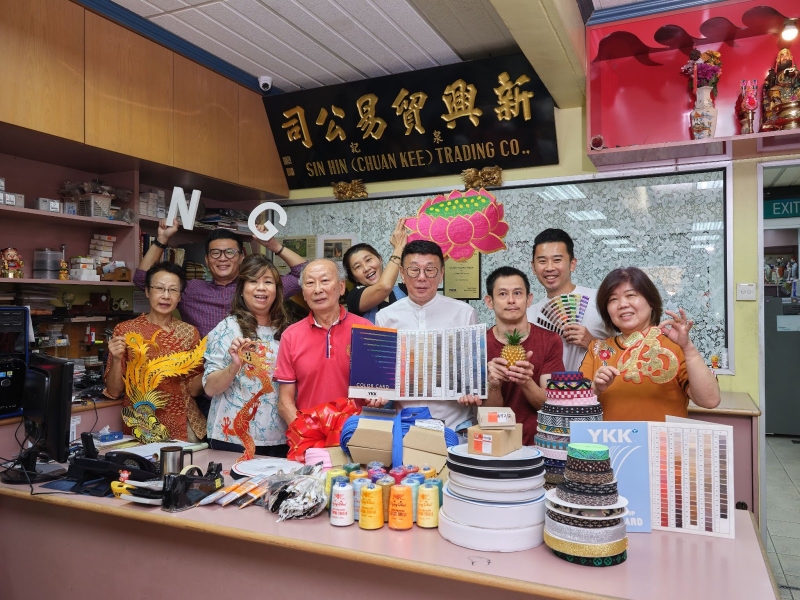
Image credit: National Heritage Board
Having opened their doors in the 1960s, the name “Chuan Kee” pays homage to Ng Koon Teng, the founder’s hometown in Quanzhou, China. Initially calling Clyde Street their home, this street ceased to exist after the area underwent redevelopment in the 1970s.
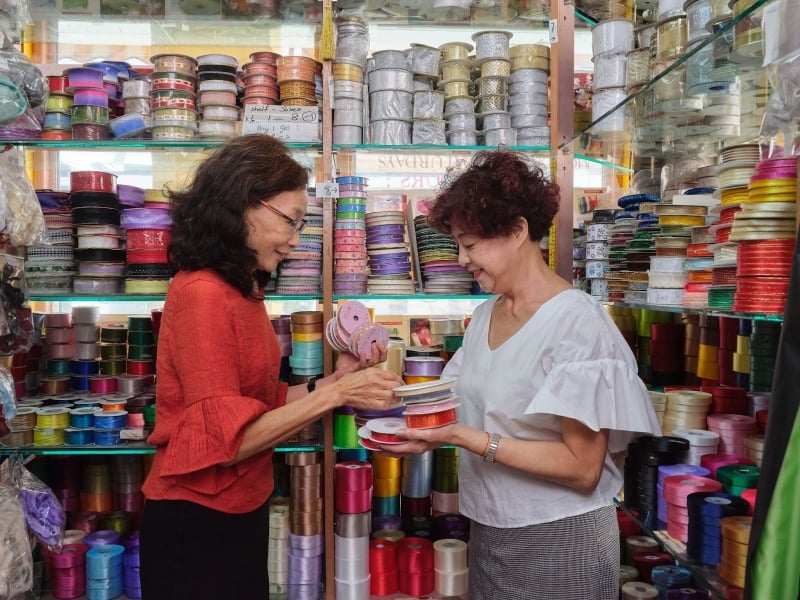
Image credit: National Heritage Board
Now calling the Kampong Gelam area their home, Sin Hin Chuan Kee is run by the third generation of the Ng family. The business still flourishes as orders and supplies are continually delivered via Grab Delivery – gone are the days when they had to rely on rickshaw riders in the 1960s. Much like how they’ve adapted themselves by means of transport, the business has sustained itself in order to keep up with evolving fashion tastes as they continue to serve a diverse clientele.
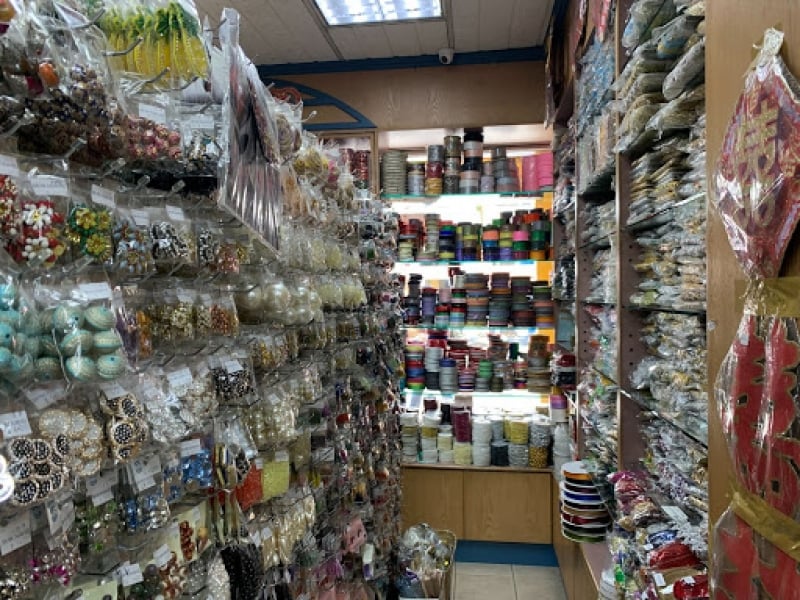
Image credit: Cassandra Nerva
Walking into this store is like stepping into a time capsule: Its interior is a step back in time as the shop retains its traditional signs and furniture while housing a myriad of craft supplies. There are aisles of buttons, pins, lace, and all other sorts of material that you might need for your arts and crafts project.
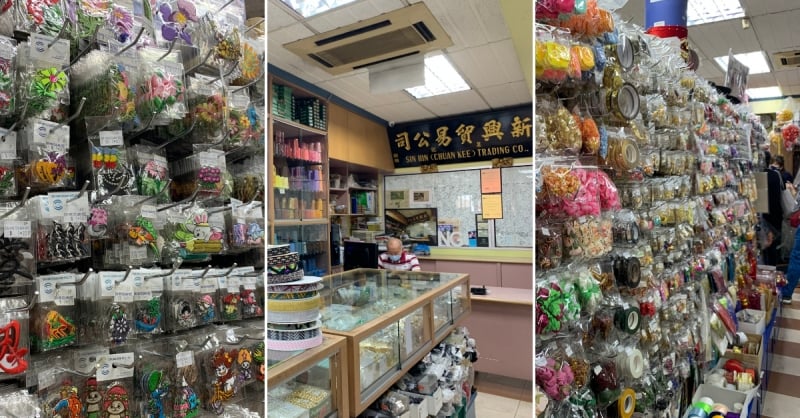
Image credit: Cassandra Nerva
If you enjoy dabbling in the occasional arts and crafts project, Sin Hin Chuan Kee is your one-stop shop for all the tools and supplies you might need. Regardless of your tastes, you’re certain to find the design and material that’ll suit your project. From quirky and colourful buttons and pins to ribbons, textiles, laces, and beads, we’re certain that a trip here will be well worth your time.
Address: 796/798 North Bridge Road, Singapore 198766
Accessories & fragrance
2. V. S. S. Varusai Mohamed & Sons
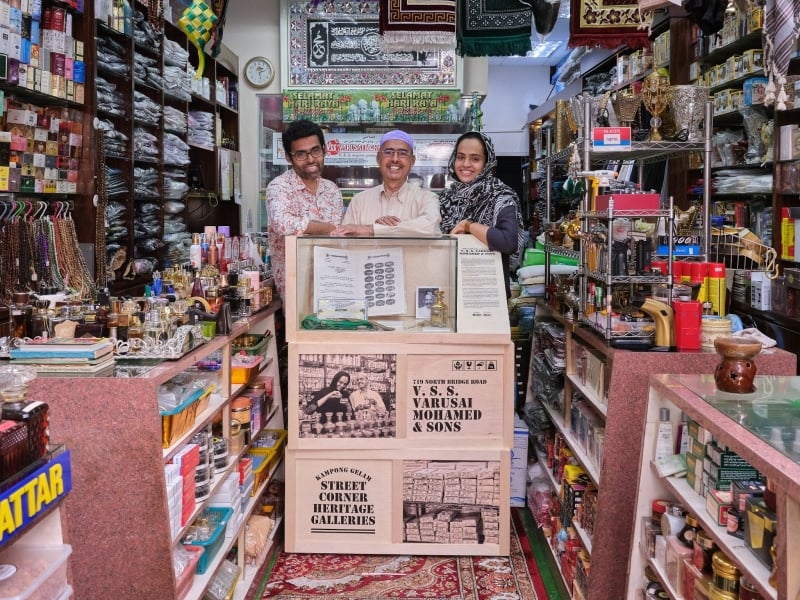
Image credit: National Heritage Board
An authentically traditional business, V. S. S. Varusai Mohamed & Sons has provided Muslims with accessories for the Haj pilgrimage since 1935. Best known for a sturdy, practical belt used by Haj travellers, known colloquially in Malay as tali pinggang haji, or simply as a green belt, this item was first manufactured during the founder’s, Varusai Mohamed, own Haj journey.
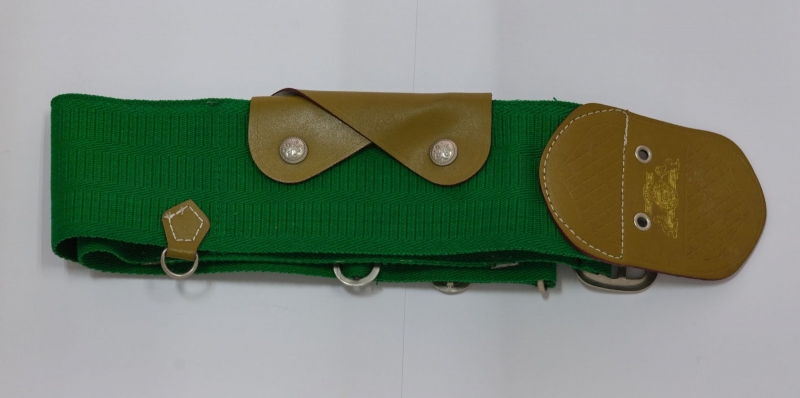
Image credit: National Heritage Board
An ihram is donned during a Haj, which is an unstitched and seamless robe to signify the equality of all Muslims before God. Upon noticing that pilgrims would tie their money pouches using makeshift methods to their ihram, Varusai Mohamed was inspired to design a belt that would accommodate their money and necessities.
At its peak, up to 60,000 belts were manufactured in Singapore using quality components, and exported to the Middle East each year. Varusai Mohamed’s customers included pilgrims from Singapore, Malaysia, and Indonesia, who would stop by Kampong Gelam on the way to and from the Haj.
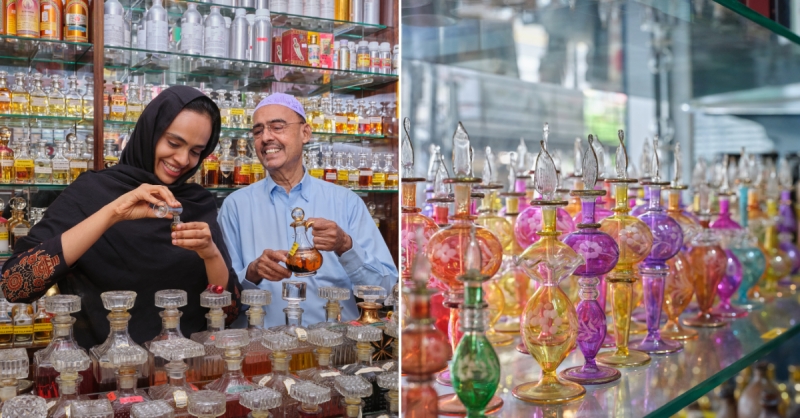
Image credit: National Heritage Board
Now run by second and third generation owners, they continue to stock ihram clothing, and have expanded their inventory to include incense and perfume as they draw in a multicultural customer base.
Address: 719 North Bridge Rd, Singapore 198687
3. Jamal Kazura Aromatics
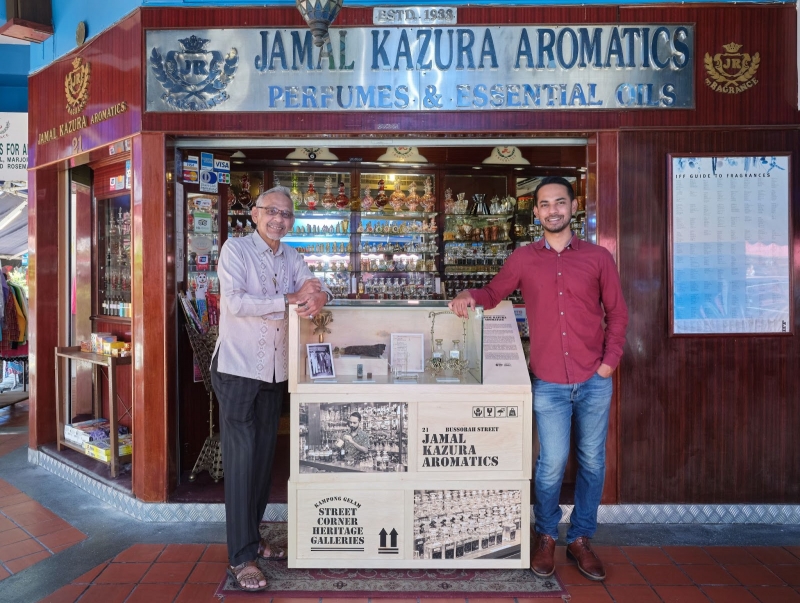
Image credit: National Heritage Board
With a history of 87 years, Jamal Kazura Aromatics might not be an unfamiliar name from research for school projects back in primary and secondary school. Interestingly, the business did not have its roots in perfumery, but was a general trading shop stocking items such as books, gemstones, and apparel.
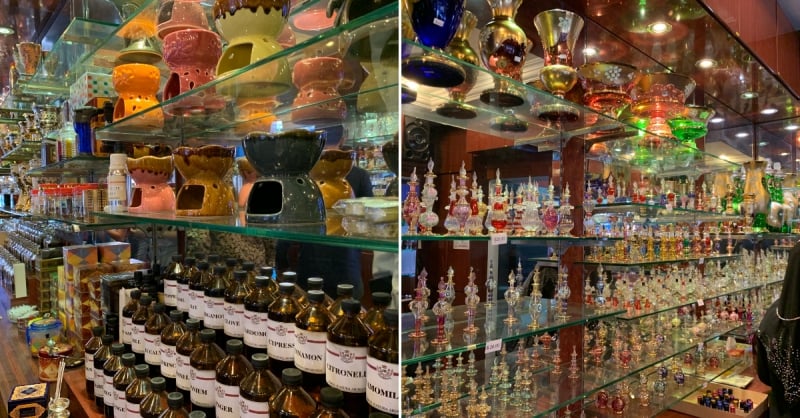
Image credit: Cassandra Nerva
Only since the mid-1970s did the focus turn towards perfumery, and expanded its inventory to include essential oils and incense. Here you’ll find a wide range of scents to suit all tastes, as well as several decorative bottles and essential oil burner designs!
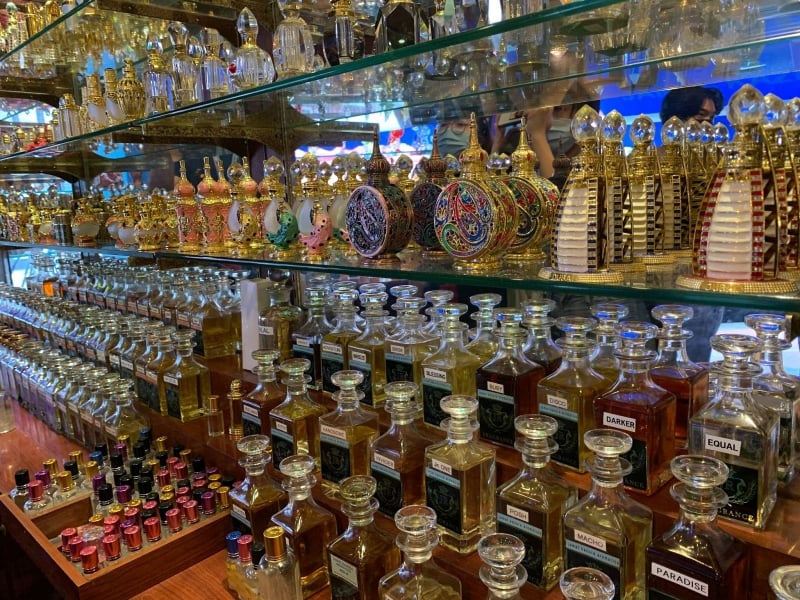
Image credit: Cassandra Nerva
Now, Jamal Kazura Aromatics houses an extensive collection of perfume scents divided into the Western and Oriental family: The former primarily caters to more modern, younger customers, with sweet, floral, and citrus-smelling scents, while the latter caters to older, long-time customers who prefer woody and earthy scents. The collection has broadened over the years to cater to evolving tastes as their clientele continues to be multi-ethnic and multi-religious.
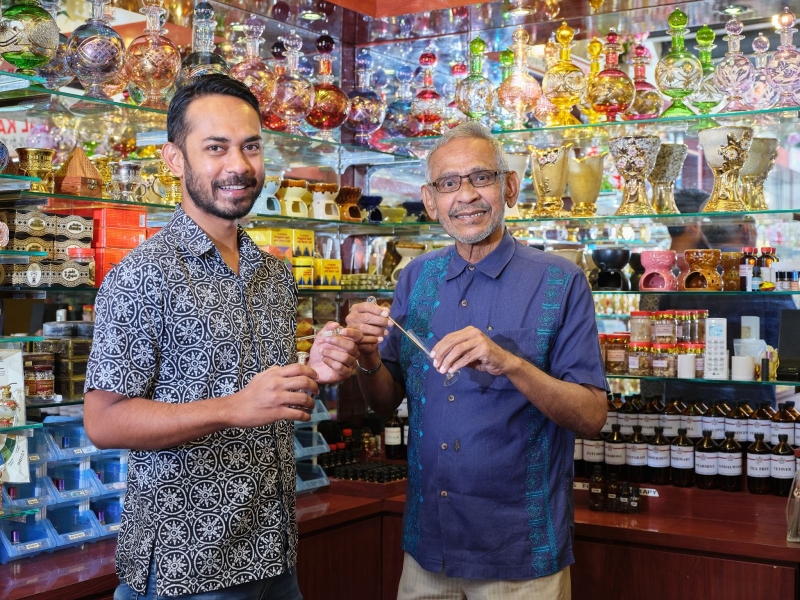
Image credit: National Heritage Board
Third generation managers hilariously recounted that while Jamal Kazura Aromatics does not perform any animal testing – as they continuously create and experiment new scent concoctions – the business prides itself on “children testing”: They recall being known as “perfume kids” back in their school days as they’d go to school with multifarious scents on their arm.
With its backstory and collection, Jamal Kazura Aromatics is certainly unlike any other cosmetic or perfume shops you’d find on the streets of Orchard Road. Why not stop by Kampong Gelam for an authentic look into how a traditional perfume business operates?
Address: 27 Bussorah St, Singapore 199445
Food & Beverage
4. Bhai Sarbat Singapore
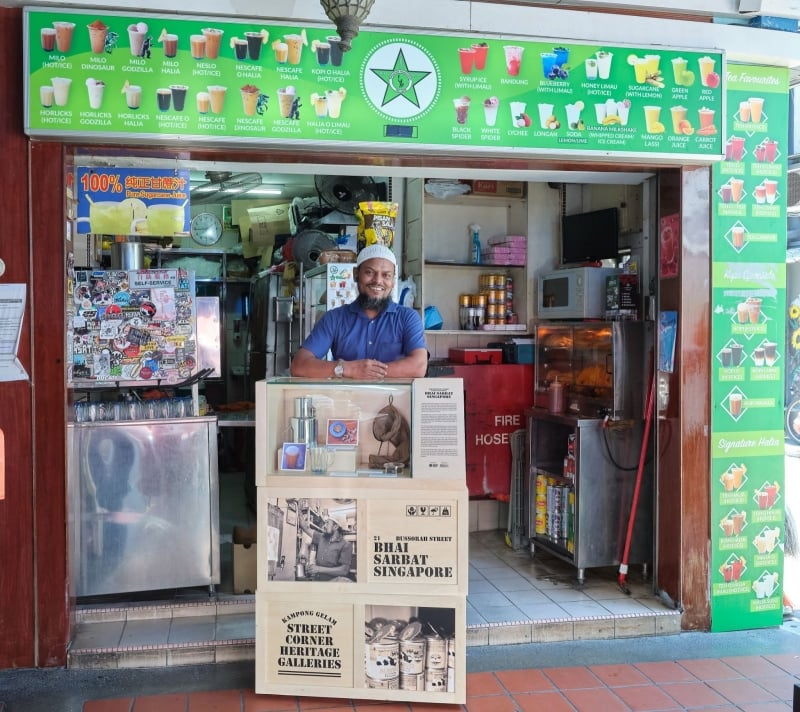
Image credit: National Heritage Board
If you ever reminisce about the times we’d travel to Taiwan or Japan and relish in their street food – not forgetting the performance that accompanies its preparation – look no further than Bhai Sarbat Singapore! With their specialty item, teh halia, current owner Mohammad Asgar pulls in crowds with his sensational pulling, or tarik (“pull” in Malay) skills (pun intended)! A crowd pleaser, he tariks the tea at what I would call lightning speed: Blink, and you’ll miss it!

Image credit: National Heritage Board
A fun fact (from Asgar himself) is that the method of pulling the tea affects its flavour and temperature. It is no wonder then that pulling tea is a skill to be mastered, and one shouldn’t be fooled by how effortless Asgar makes it look.
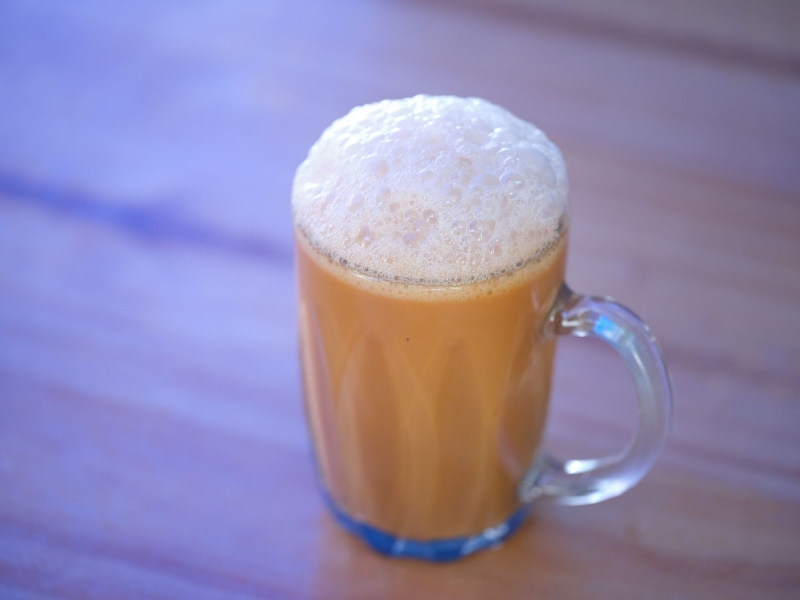
Image credit: National Heritage Board
Teh tarik is a street favourite because of how foamy, creamy, and flavourful an ordinary cup of tea can become. I enjoyed a cup of teh tarik at his shop, and was delighted by how milky the tea was with a pleasant amount of tea flavour – it was neither too strong nor too sweet. It’s really everything you want in a cup of teh tarik.
It’s no wonder then that this recipe has been set in stone since the shop’s introduction in the 1950s, and has been consistent throughout. If you’re ever in the Kampong Gelam area and crave an authentic cup of chai, why not stop by this traditional business for a taste of teh tarik that’s stood the test of time?
Address: 73 Bussorah St, Singapore 199486
5. Rumah Makan Minang
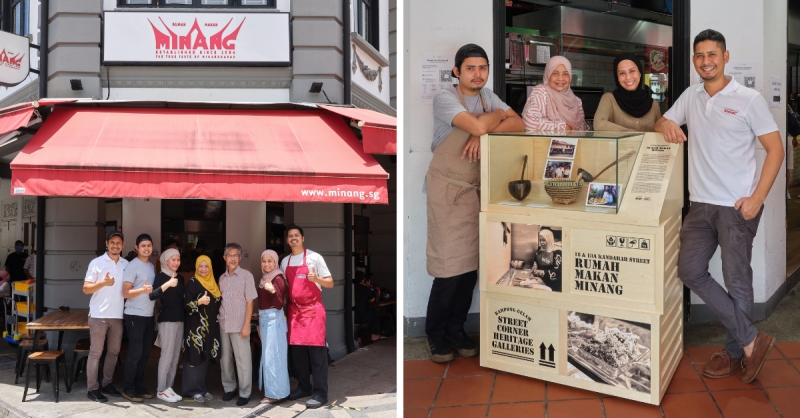
Image credit: National Heritage Board
Run by a second-generation family, owner Zulbaidah binte Marlian follows in the footsteps of her mother and now leads the Kandahar Street nasi padang restaurant in a succession of independent, strong female figures characteristic of Minangkabau culture. Rumah Makan Minang, or known simply as Minang by its customers, is a traditional business famous for its consistent quality of food.
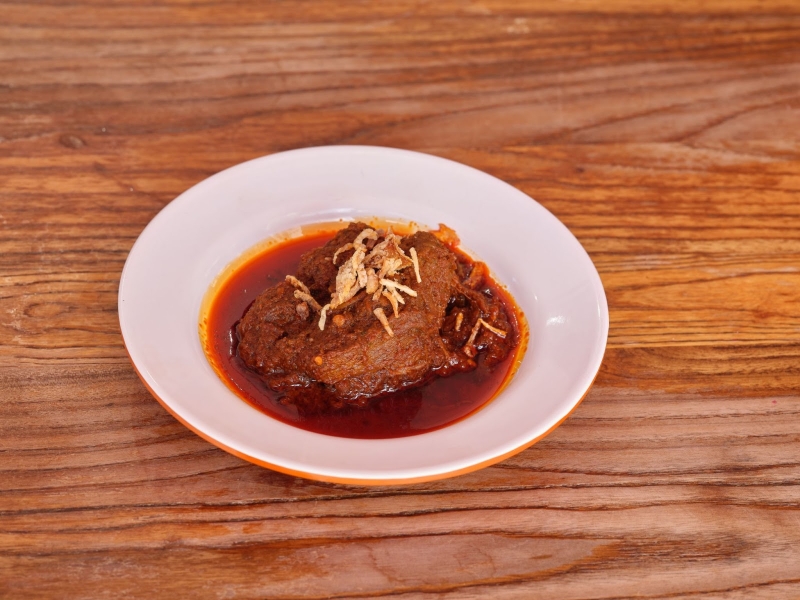
Image credit: National Heritage Board
Established in the early 1980s, Minang’s most popular dishes are characteristic of Minangkabau culture. Beef rendang is a slow-cooked dish of beef, spices, and coconut; their version is a drier, caramelised style. Their beef rendang is wonderfully tender and delectable in its coconut flavour – a tip is to ask for extra gravy to complement your rice!

Image credit: National Heritage Board
Some of their other best-selling dishes feature sambal belado, which is a coarse chilli paste widely used in Minangbakau culture: These are ayam belado hijau (fried chicken with signature green sambal belado) and paru belado merah (fried cow lung with red sambal belado).
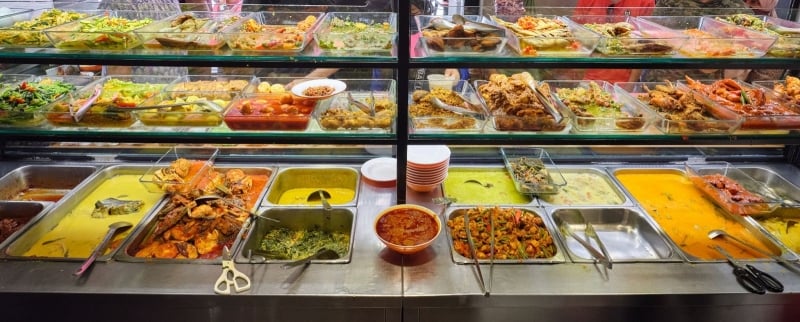
Image credit: National Heritage Board
The business has expanded itself in more ways than one: Not only has it recently opened a new branch in Tampines in 2017 (so that easties can now enjoy their nasi padang), their beef rendang has even been featured on Shangri-La Hotel’s heritage menu!
Addresses:
Kampong Gelam location: 18 & 18A Kandahar Street, 198884
Tampines location: Our Tampines Hub, 1 Tampines Walk, #B1-47A, 528523
6. Sabar Menanti Nasi Padang, or Sabar Menanti II
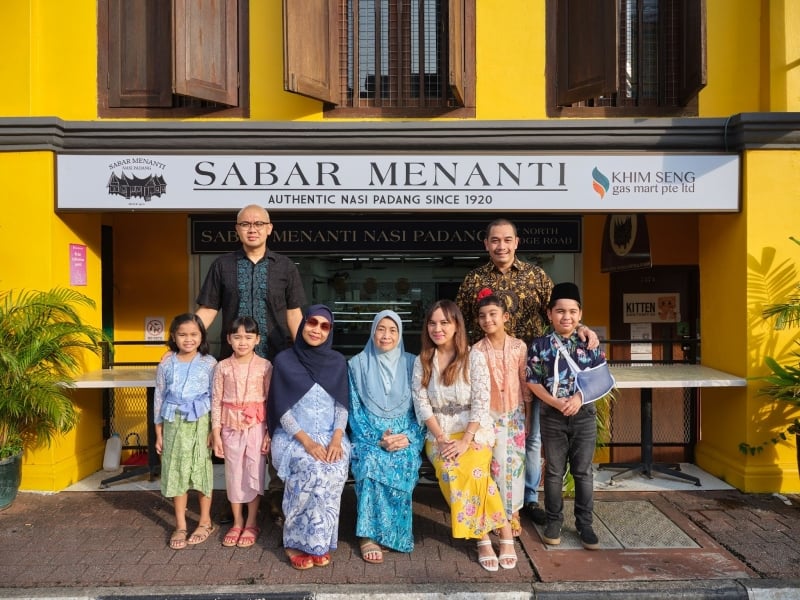
Image credit: National Heritage Board
With the longest history on the list, it is no surprise that Sabar Menanti II is one the most well-known nasi padang restaurants in Singapore: Its original establishment started as an unnamed street stall in the 1920s.
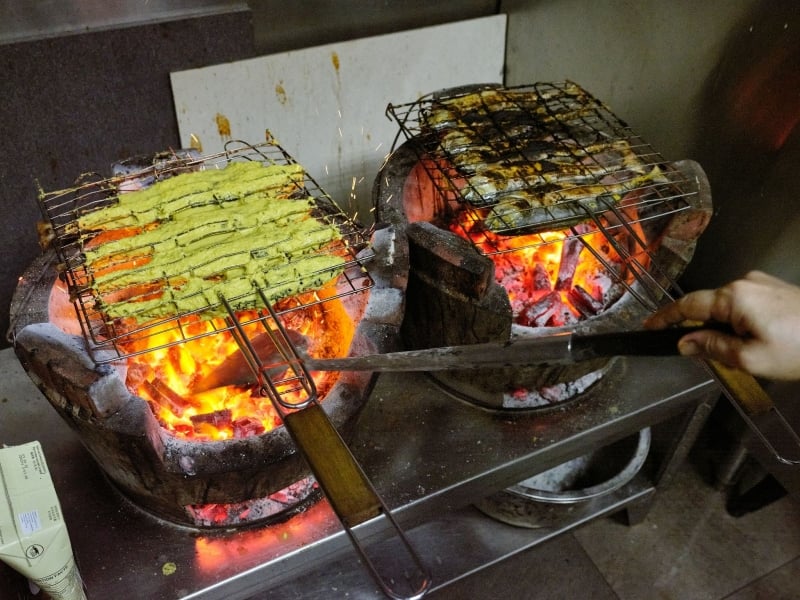
Image credit: National Heritage Board
Current owner Mayulis Bagindor binte Marlian continues with the traditional Minangkabau cooking method of using firewood to charcoal grill, as well as traditional spices and ingredients to preserve the authenticity of its food. It’s certainly impressive that while tradition is preserved, the restaurant manages to draw in a new generation of customers.
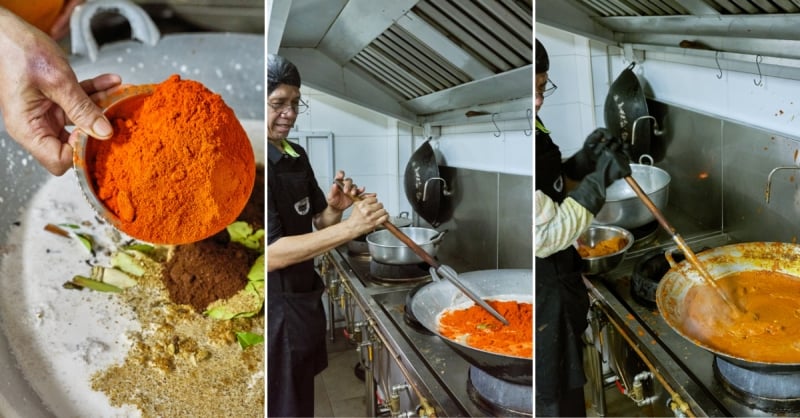
Image credit: National Heritage Board
As charcoal grilling is probably the most traditional cooking method a nasi padang restaurant can adopt, Sabar Menanti II is an establishment that certainly holds true to its roots as it continues to serve its crowd favourites: beef rendang, ikan bakar (grilled fish), and ayam gulai (Padang-style chicken curry).
Address: 737 North Bridge Rd, Singapore 198715
7. Warong Nasi Pariaman
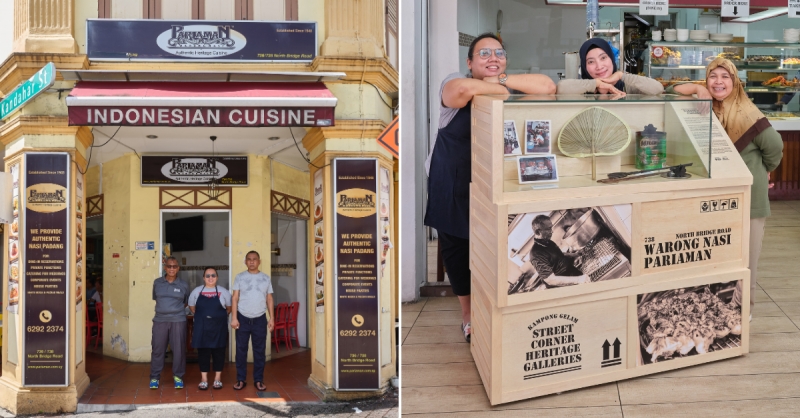
Image credit: National Heritage Board
Led by second and third-generation owners of the founders, Isrin bin Ibrahim and his wife Rosna binte Zainal Abidin, Warong Nasi Pariaman has been in operation at North Bridge Road since 1948, continuing to stand at this very same shop till this day.
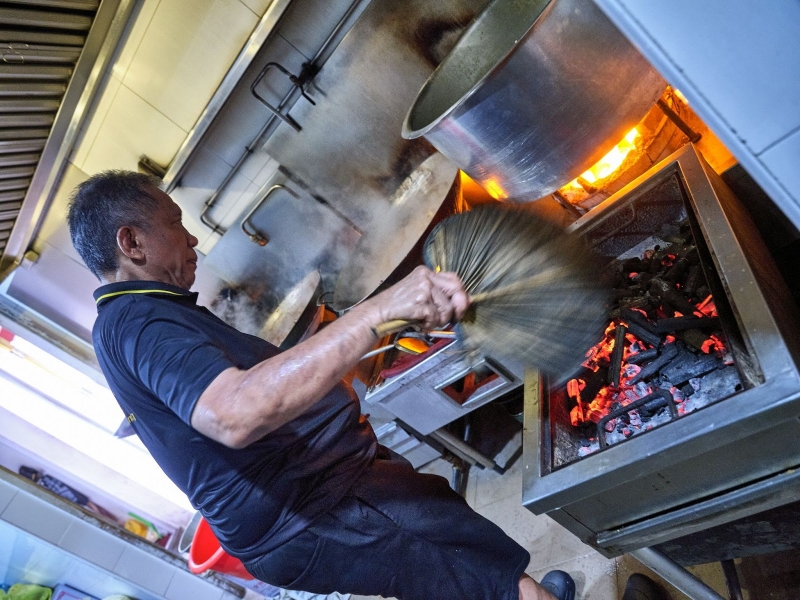
Image credit: National Heritage Board
Another restaurant that continues to keep the Minangkabau culinary tradition alive, Warong Nasi Pariaman upholds the tradition of slow-cooking over a charcoal fire, producing dishes with a subtle smoky flavour that is a rarity these days.
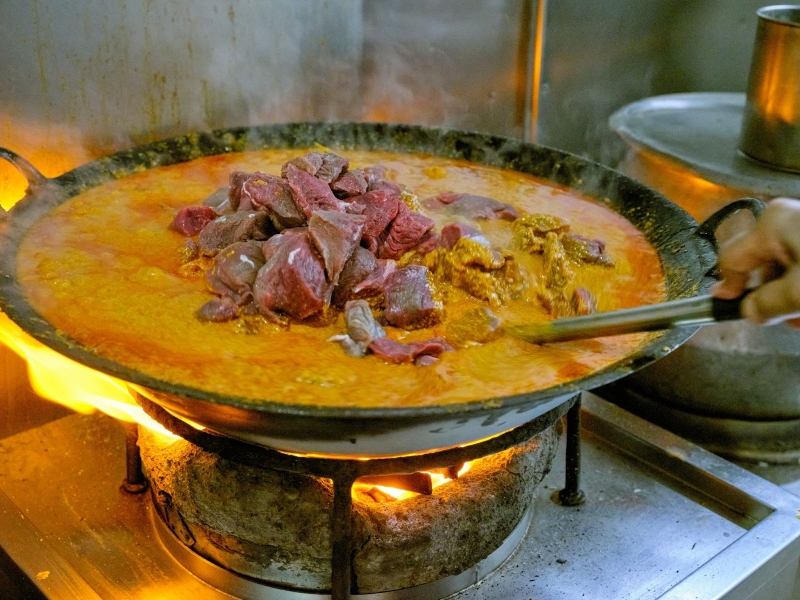
Image credit: National Heritage Board
This unique flavour profile keeps drawing in customers who long for authentic Minangkabau cuisine as they enjoy their wide array of nasi padang dishes, some of which are beef rendang, ayam bakar (grilled chicken), and gulai nangka (jackfruit curry).
Address: 738 North Bridge Rd, Singapore 198706
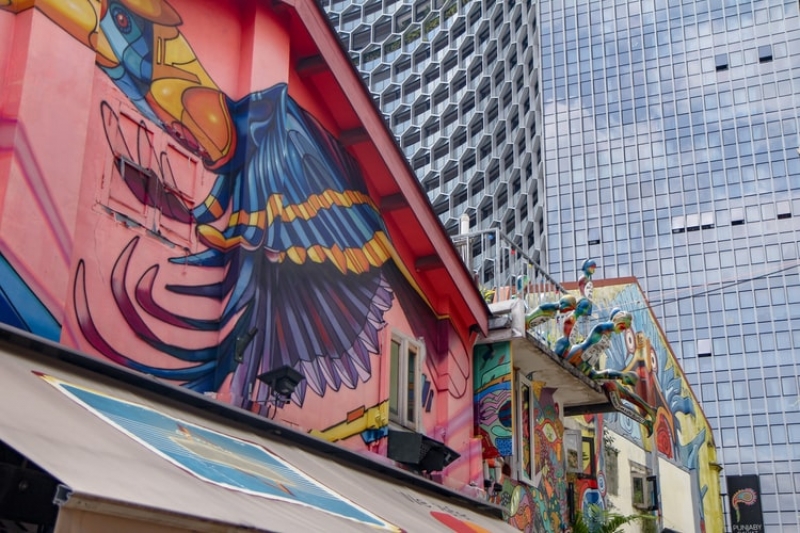
Image credit: rigel
Also read: 5 Instagram Worthy Walls in Singapore that Have More Meaning Than You Think
If you’re travelling to areas in Kampong Gelam like Haji Lane and Arab Street for its alley of boutique stores, mural paintings, and #OOTDs, why not take a five-minute walk to stop by these traditional businesses and enjoy a treat for both your eyes and taste buds? We’re certain that this step back in time will be one for the books.
Featured image credit: Wengang Zhai | Unsplash





